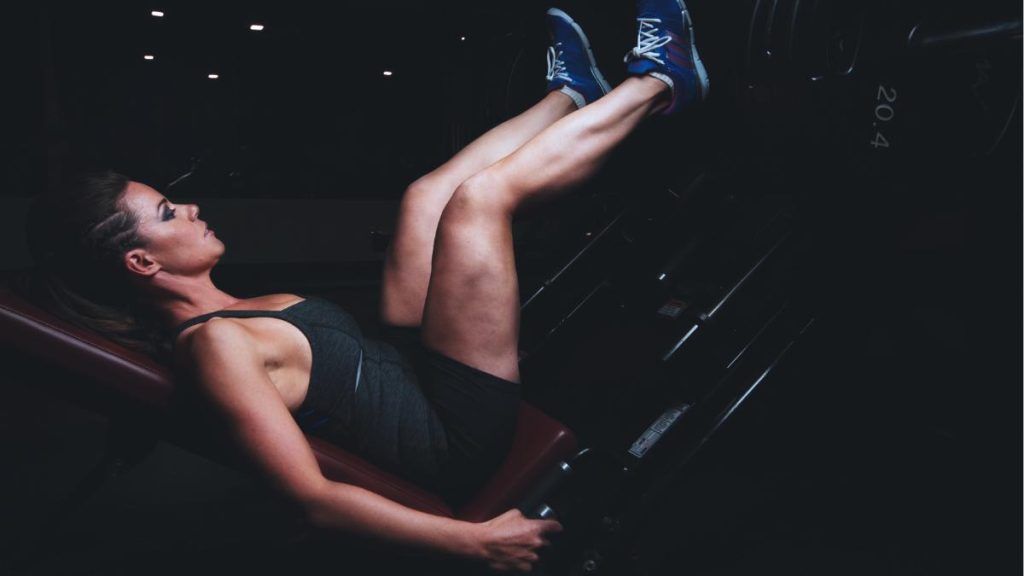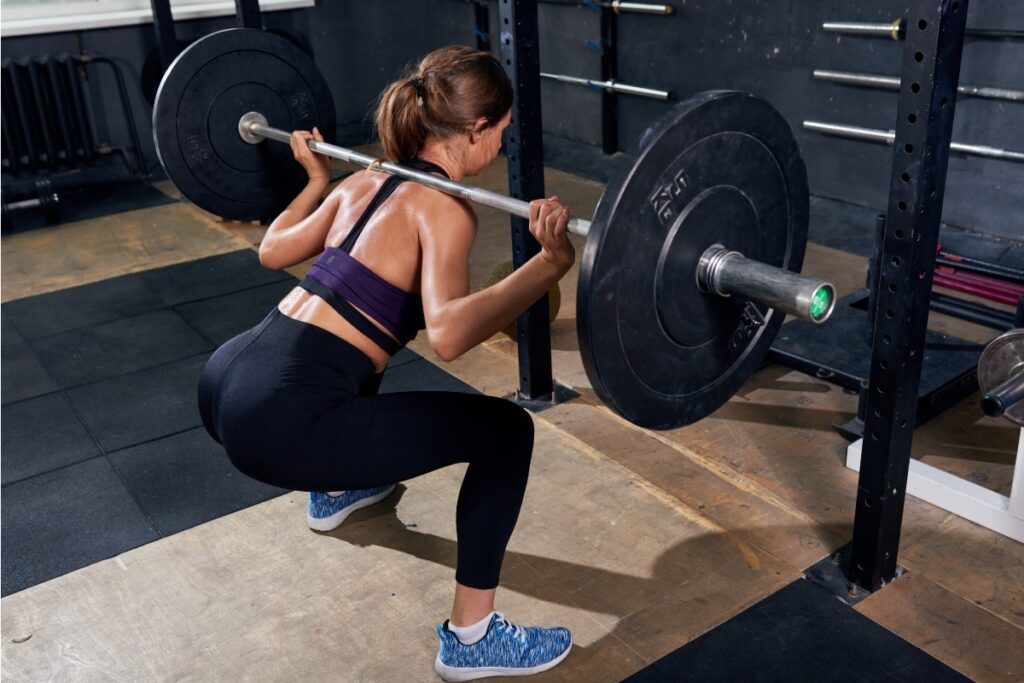Leg day is a critical part of any balanced workout routine. Strong legs support overall body strength, improve athletic performance, and contribute to better posture and balance. However, to truly maximize gains on leg day, you need a strategic approach. Here’s a guide to help you make the most of your leg workouts, from exercises to form tips and recovery strategies.
Why Is Leg Day Important?
Leg day targets the body’s largest muscle groups, including the quadriceps, hamstrings, glutes, and calves. By focusing on these muscles, you’re not only building strength but also increasing your body’s capacity for fat burning due to the higher metabolic demand. Regular leg workouts contribute to better functional fitness, making everyday activities easier and supporting other lifts in your routine.
How to Warm Up for Maximum Leg Day Gains
Warming up properly before leg day is essential for preventing injury and preparing your muscles for heavy loads. A good warm-up increases blood flow to the muscles, enhances flexibility, and primes the nervous system for action.
- Dynamic Stretches: Start with dynamic stretches like leg swings, walking lunges, and hip openers to loosen up your joints and muscles.
- Light Cardio: A brief session on the treadmill or stationary bike (5–10 minutes) will get your blood pumping, raising your core temperature.
- Activation Exercises: Use resistance bands for glute bridges and lateral band walks to activate the glutes and hip muscles, ensuring these key stabilizers are engaged.
What Are the Best Exercises for Leg Day Gains?
A well-rounded leg day routine should include both compound and isolation movements to target the different leg muscles effectively. Here are essential exercises to include:
- Squats – Known as the “king” of leg exercises, squats activate the quads, glutes, hamstrings, and core. Variations such as front squats and goblet squats shift the focus slightly, targeting the quads and core more intensely.
- Deadlifts – Deadlifts, particularly Romanian and sumo variations, emphasize the hamstrings and glutes while working the lower back. They’re an essential compound movement for building lower body strength.
- Lunges – Lunges, including reverse and walking lunges, target the glutes, hamstrings, and quads while improving balance and coordination. They also work each leg independently, helping to correct muscular imbalances.
- Leg Press – The leg press is excellent for lifting heavy weights without placing too much stress on the lower back. This exercise primarily targets the quads but also engages the glutes and hamstrings depending on foot positioning.
- Leg Extensions and Curls – For more isolated focus, leg extensions work the quads, while hamstring curls target the backs of your legs. These exercises can enhance muscle definition and strength in specific areas.
- Calf Raises – Don’t forget to target your calves! Standing or seated calf raises are essential for building strength in the lower leg, supporting stability and balance.
How to Use Reps and Sets to Maximize Leg Gains
Understanding the right reps and sets for your goals will help you build strength, size, or endurance effectively.
- Hypertrophy (Muscle Growth): Aim for 3-4 sets of 8-12 reps for each exercise, with a moderate-to-heavy weight. Focus on a controlled tempo and full range of motion for optimal muscle activation.
- Strength: If your goal is strength, increase the weight and aim for 4-5 sets of 4-6 reps. Allow for longer rest periods (2-3 minutes) between sets to enable full recovery and maximum output.
- Endurance: To build endurance, choose a lighter weight and aim for 15-20 reps per set. This can be beneficial as a finisher at the end of your leg workout.
Form Tips to Prevent Injury and Boost Results
Proper form is essential to avoid injury and maximize gains. Here are some form tips for key leg exercises:
- Squats: Keep your back straight, core engaged, and push through your heels. Avoid letting your knees cave in; they should track over your toes.
- Deadlifts: Maintain a neutral spine, hinge at the hips, and keep the bar close to your body. Avoid rounding your back, as this can strain the lower spine.
- Lunges: Keep your torso upright, take a controlled step forward or backward, and lower your hips until both knees are at about a 90-degree angle.
- Leg Press: Adjust your feet for comfort and ensure your back is pressed against the seat. Push through your heels and avoid locking your knees at the top of the movement.
How to Use Tempo and Rest Periods to Enhance Your Leg Day Gains
Adjusting the tempo of each repetition can have a big impact on muscle engagement. Slowing down your eccentric (lowering) phase increases muscle tension, which is beneficial for hypertrophy. Try a 3-1-2 tempo: three seconds on the way down, a one-second pause, and two seconds on the way up.
Additionally, managing rest periods based on your goals is important:
- Hypertrophy: Rest for 60-90 seconds between sets.
- Strength: Rest for 2-3 minutes between sets.
- Endurance: Rest for 30-60 seconds to keep the intensity high and your heart rate elevated.
Recovery Strategies to Maximize Gains After Leg Day
Muscles grow during recovery, so post-workout care is as important as the workout itself. Here’s how to recover effectively after a leg day session:
- Stretching: Follow your workout with static stretching to reduce muscle stiffness and improve flexibility.
- Hydration: Staying hydrated helps muscle recovery by aiding in nutrient transport and reducing cramping.
- Protein Intake: Consuming protein after your workout supports muscle repair and growth. Aim for 20-30 grams of protein within an hour after your session.
- Sleep: Quality sleep promotes muscle recovery and growth by allowing your body to repair and build tissue. Aim for 7-9 hours of sleep per night to optimize recovery.
Sample Leg Day Routine for Maximum Gains
Here’s a sample leg day routine that incorporates all the principles discussed:
- Warm-Up: Dynamic stretching and light cardio for 5-10 minutes.
- Squats (4 sets of 8-10 reps): Start with a compound movement to target multiple muscles.
- Deadlifts (4 sets of 8 reps): Follow with a deadlift variation for hamstring and glute activation.
- Leg Press (3 sets of 10 reps): Use the leg press to further focus on the quads and glutes.
- Lunges (3 sets of 12 reps per leg): Challenge stability and unilateral strength with lunges.
- Leg Curls (3 sets of 12 reps): Target the hamstrings with an isolation exercise.
- Calf Raises (4 sets of 15-20 reps): Finish with calf raises to build lower leg strength.
Key Takeaways to Maximize Gains on Leg Day
Leg day requires a strategic approach, from warming up to selecting the right exercises and focusing on form. By combining compound and isolation exercises, adjusting tempo and rest periods, and ensuring proper recovery, you’ll see significant gains in leg strength, size, and endurance.
Integrating these strategies into your routine will help you achieve impressive leg growth and overall fitness. Whether your goal is strength, muscle size, or endurance, a well-rounded leg day routine will provide lasting benefits for your entire body.




